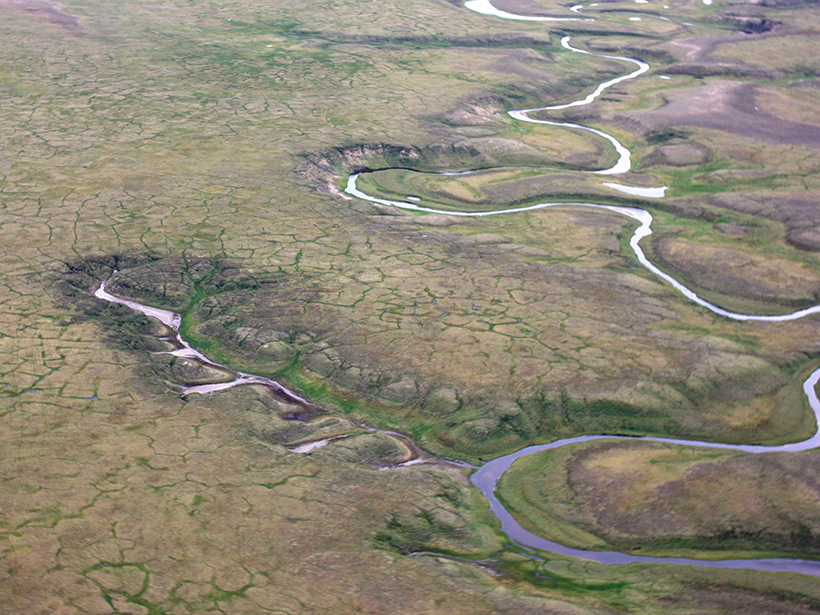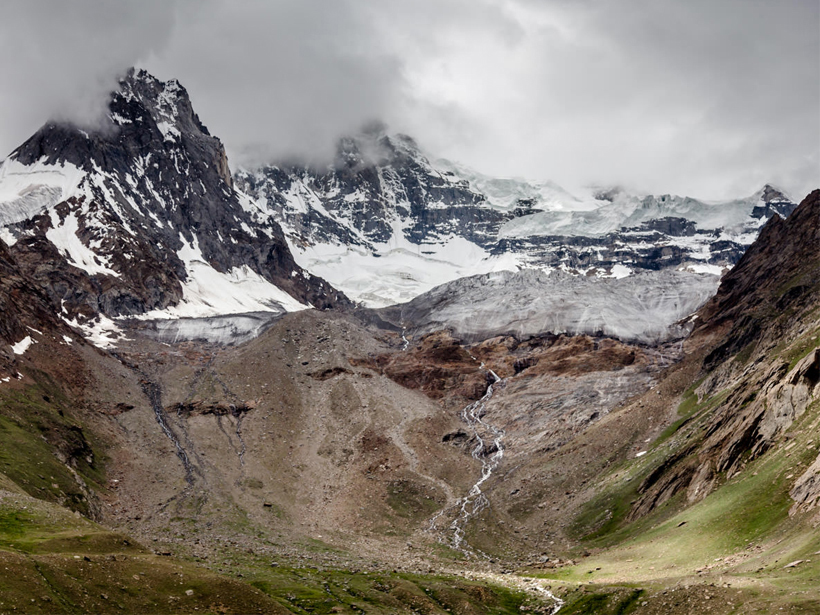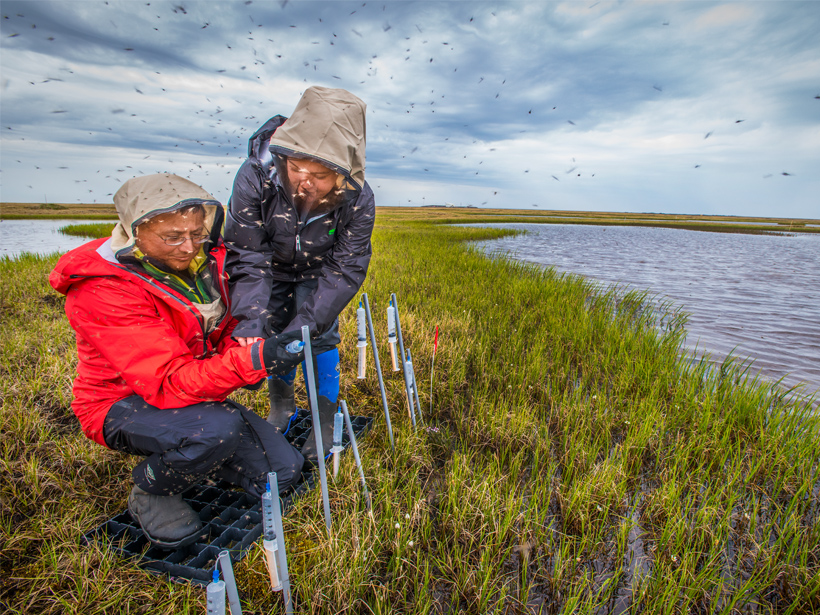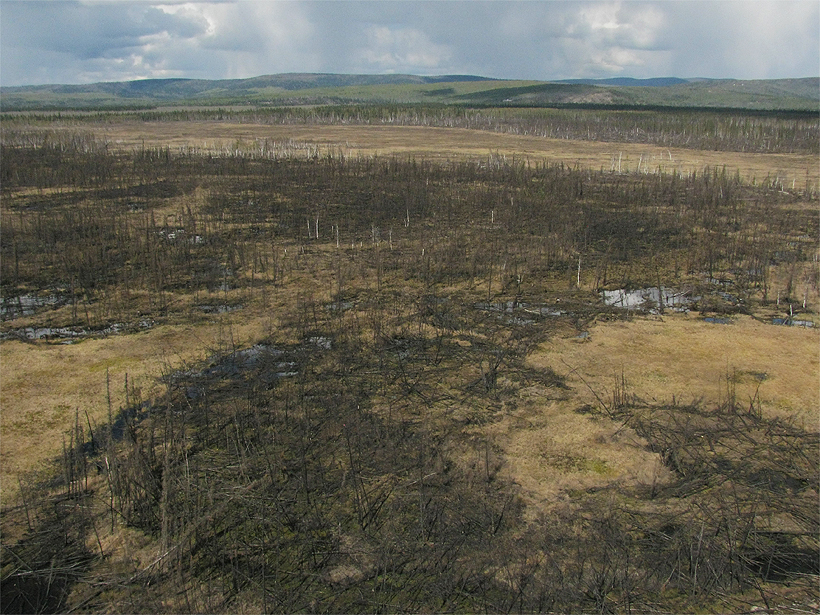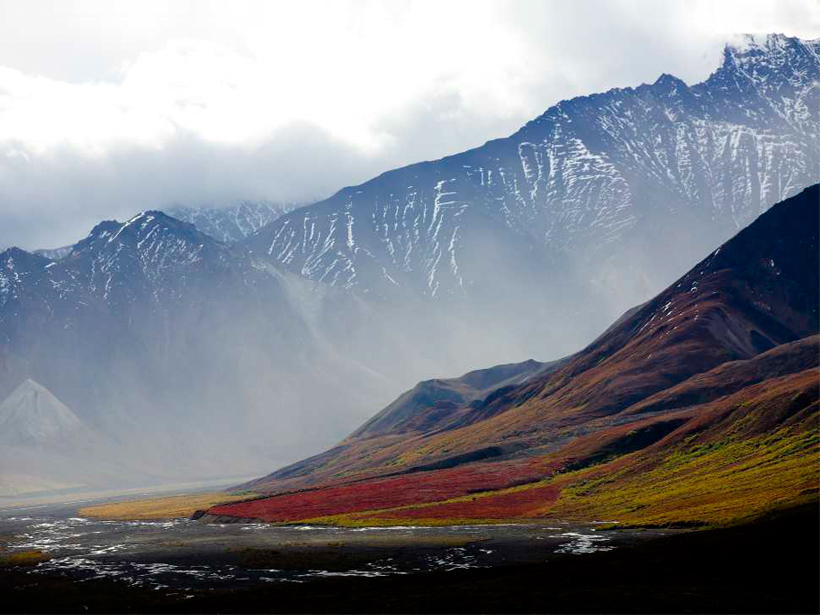An international team probed Arctic permafrost samples to better understand the carbon feedback loop that could be set off by future thawing.
permafrost
Andrew G. Slater (1971–2016)
Andrew "Drew" Slater, land modeler extraordinaire, died on 9 September 2016. He was 44 years old.
Map Reveals Hot Spots for Arctic Greenhouse Gas Emissions
By bringing together data on permafrost stability, soils, and other Arctic conditions, scientists have plotted where permafrost is vulnerable to collapse, which could release long-stored carbon.
Permafrost Area Is Sensitive to Key Soil and Snow Physics
Accounting for key soil and snow variables shows a much higher impact on simulated permafrost area than uncertainties in land cover and climate data.
Tracking Carbon in the Alaskan Arctic
Researchers trace carbon through Arctic soils and find an unlikely source of methane and surprisingly low methane oxidation in watersheds throughout northern Alaska.
Alaskan Wildfires Influence Permafrost Recovery
Warming climate reduces permafrost's ability to recover following wildfires in Alaskan lowland forest.
Simulating a Warmer, Drier Arctic
Field experiments examine the effect of rising temperatures and drying soils on carbon dynamics in the Arctic.
Methane-Producing Microbes Important for Studying Greenhouse Gas Emissions
Scientists have long thought that methane-producing microbes contribute to climate change but are slowly learning just how big a role these microbes play.


